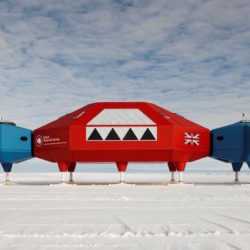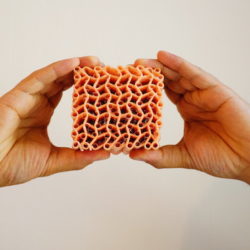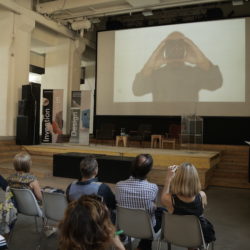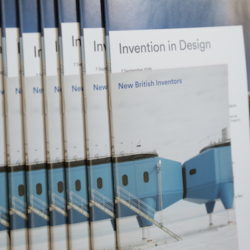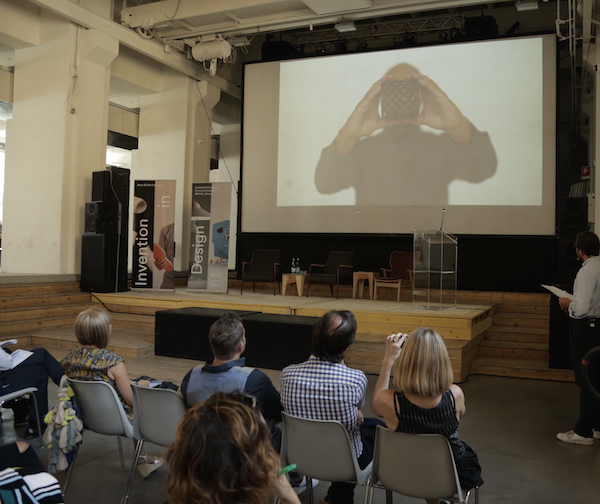
The British Council’s Invention in Design program creates a platform for an international debate about the potential of design to shape the future and celebrates pioneering designers (link New British Inventors pdf booklet below). This article written by Ria Hawthron, New British Inventors Project Manager, summarizes the lively meeting organized by British Council at Base Milano.
There is fertile ground in Italy and the UK for inventive design. Designers are experimenting with new modes of cross-disciplinary practice and collaboration, capitalising upon advances in digital technology and risk-taking through research.
One of the most significant effects of invention is where design has the potential to shape the future with a positive social impact – on inclusion, health, education or environment. There are many inventive ideas surrounding social design but often there are barriers to turning these ideas into reality, and making a difference to people’s lives. From design for ambulances, to portable digital eye examination kits in developing countries or changing attitudes to disability – these ideas take time, money and determination to realise.
On 7 September, 5 designers from the UK and Italy were invited to participate in an afternoon of discussion chaired by Abitare’s design editor and curator, Marco Sammicheli. Leading architect Hugh Broughton, industrial design engineer Oluwaseyi Sosanya, and Creative Director at the Crafts Council UK, Annie Warburton travelled from the UK to join Enrica Carvazan, co-founder of design studio Zaven, and Giorgio Biscaro, Creative Director at Fontana Arte.
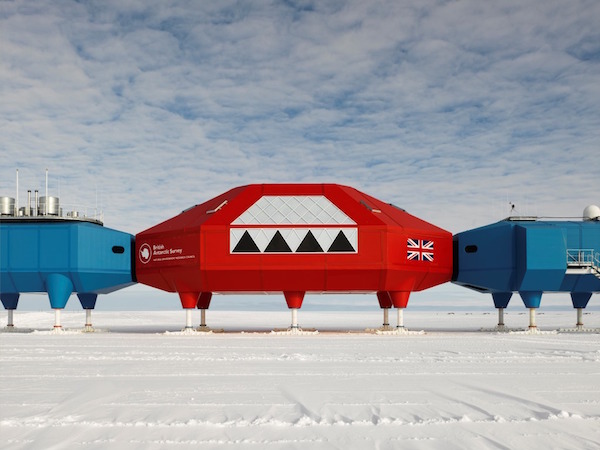
Hugh Broughton started the afternoon with an awe-inspiring talk about his experience designing the Halley VI Ice Station in Antarctica, situated on a slowly moving ice shelf in one of the harshest environments on earth where temperatures are always below freezing and reach as low as -55 degrees Celsius in winter. His design allows the building to be towed to a new location in case the ice shelf becomes unstable, and also lifts itself above rising snowdrifts using hydraulic legs. Broughton vastly improved the human experience of living for 6 months of the year isolated in total darkness by creating better social spaces and use of light.
Enrica Carvazan revealed very contrasting, and multi-faceted approach to design, taking inspiration from a myriad of sources and often investigating the relationship between art and design, influenced by her background in visual arts. Taking an entrepreneurial approach to innovation, Zaven has formed a small publishing house, Monos Editions, as well as Something Good, which produces and distributes collections of work from a select group of designers. Carvazan’s mantra is ‘practice and the rest will follow’.
The second session was a panel discussion focussing on research, risk-taking and collaboration – themes which all the panelists felt were integral to their work and successful projects.
Annie Warburton explained how the Crafts Council provide a vision and advocate for the crafts sector in the UK as well as the critical importance commissioning research to prove the value of the creative industries when lobbying the government, and others, for support.
The key themes that were discussed were increased collaboration between designers and makers with scientists, technologists, and researchers and how designers can transform the ways that other industries work.
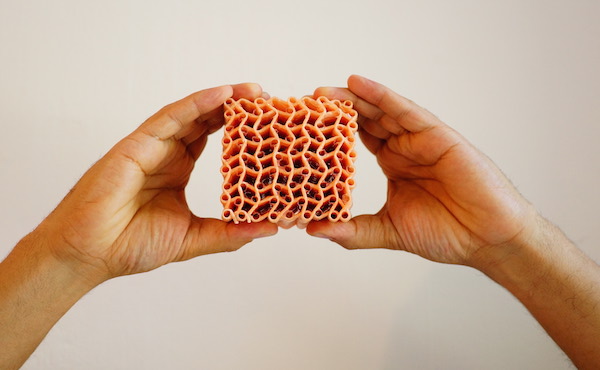
Oluwaseyi Sosanya gave the example of his 3D Weaver which he developed by working closely with traditional weavers to create a machine that can weave in three dimensions. He initially thought about wearable applications for the new materials, but when those from other fields saw it they suggested alternative applications. Scientists thought the technology could be used to innovate in the fields of medicine or aerospace.
Giorgio Biscaro, a multi-disciplinarian revealed that designers need skills beyond the technical design knowledge. Fostering invention is often about creating an open attitude in colleagues and winning the support of others. Working with a traditional and renowned lighting brand took a great deal of persuasion to try new technology and materials and bring efficiencies in the production process.
The event brought the space and time for the participants to reflect on design practice and to exchange ideas. It was reassuring to see a common drive to challenge the status quo in design production, to constantly re-appraise the design process and a common openness and desire to collaborate with others in many different fields.
In fact, the naivety of a designer while working in a new field is valuable, as it can bring fresh ideas that are the catalyst for invention and have the potential to change the world around us.
Text by Ria Hawthron, New British Inventors Project Manager, British Council
Captions
Upper photo: Sugru, design by Jane ni Dhulchaointingh, is a patented, formable silicone that can be used for fixing or improving objects.
Down, from left:
Halley VI Antarctic research station, design by Hugh Broughton Architects.
A product made by 3D Weaving Machine, design by Oluwaseyi Sosanya.
Pictures of the meeting at Base Milano.

